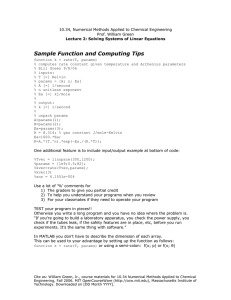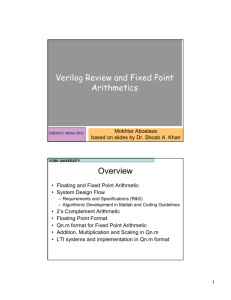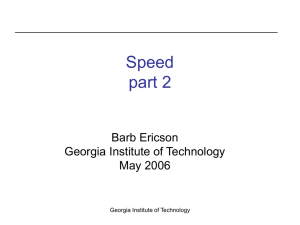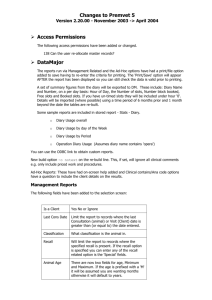INSTRUCTIONS FOR USING THE MONOTONE–ADP MATLAB
advertisement
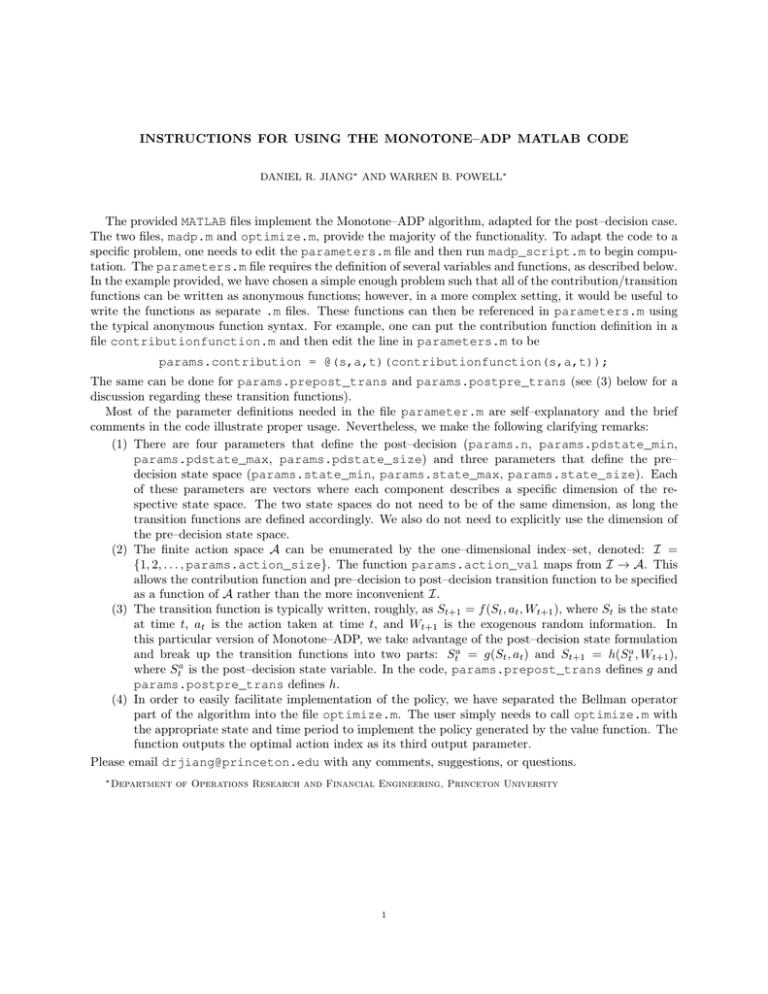
INSTRUCTIONS FOR USING THE MONOTONE–ADP MATLAB CODE
DANIEL R. JIANG∗ AND WARREN B. POWELL∗
The provided MATLAB files implement the Monotone–ADP algorithm, adapted for the post–decision case.
The two files, madp.m and optimize.m, provide the majority of the functionality. To adapt the code to a
specific problem, one needs to edit the parameters.m file and then run madp_script.m to begin computation. The parameters.m file requires the definition of several variables and functions, as described below.
In the example provided, we have chosen a simple enough problem such that all of the contribution/transition
functions can be written as anonymous functions; however, in a more complex setting, it would be useful to
write the functions as separate .m files. These functions can then be referenced in parameters.m using
the typical anonymous function syntax. For example, one can put the contribution function definition in a
file contributionfunction.m and then edit the line in parameters.m to be
params.contribution = @(s,a,t)(contributionfunction(s,a,t));
The same can be done for params.prepost_trans and params.postpre_trans (see (3) below for a
discussion regarding these transition functions).
Most of the parameter definitions needed in the file parameter.m are self–explanatory and the brief
comments in the code illustrate proper usage. Nevertheless, we make the following clarifying remarks:
(1) There are four parameters that define the post–decision (params.n, params.pdstate_min,
params.pdstate_max, params.pdstate_size) and three parameters that define the pre–
decision state space (params.state_min, params.state_max, params.state_size). Each
of these parameters are vectors where each component describes a specific dimension of the respective state space. The two state spaces do not need to be of the same dimension, as long the
transition functions are defined accordingly. We also do not need to explicitly use the dimension of
the pre–decision state space.
(2) The finite action space A can be enumerated by the one–dimensional index–set, denoted: I =
{1, 2, . . . , params.action_size}. The function params.action_val maps from I → A. This
allows the contribution function and pre–decision to post–decision transition function to be specified
as a function of A rather than the more inconvenient I.
(3) The transition function is typically written, roughly, as St+1 = f (St , at , Wt+1 ), where St is the state
at time t, at is the action taken at time t, and Wt+1 is the exogenous random information. In
this particular version of Monotone–ADP, we take advantage of the post–decision state formulation
and break up the transition functions into two parts: Sta = g(St , at ) and St+1 = h(Sta , Wt+1 ),
where Sta is the post–decision state variable. In the code, params.prepost_trans defines g and
params.postpre_trans defines h.
(4) In order to easily facilitate implementation of the policy, we have separated the Bellman operator
part of the algorithm into the file optimize.m. The user simply needs to call optimize.m with
the appropriate state and time period to implement the policy generated by the value function. The
function outputs the optimal action index as its third output parameter.
Please email drjiang@princeton.edu with any comments, suggestions, or questions.
∗ Department
of Operations Research and Financial Engineering, Princeton University
1
